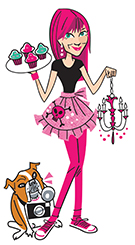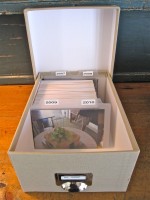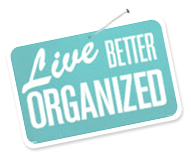Even at the age of 104, my beloved and logical grandfather, Poppy never looked at photograph without flipping it to the non-image side to search for pertinent information. If the paper side were blank, he would be quick to point out that one should ALWAYS include the name, date and location of said photo. He would then add that one might remember everything at the time of development, but one’s memory might not last as long as the snapshot.
This sound and rational advice has been the foundation of photojeanie. I continually stress to clients and friends and occasionally strangers that labeling one’s photo library is absolutely vital and necessary for the survival of one’s personal history. Photos can exchange hands and not everyone has access to the same pool of information. Even if the photographs are placed in an album with captions or filed in a box by date, photos get removed from books and boxes may fall off shelves. (The latter I know from personal experience as a shelf had collapsed in a client’s closet and the contents of 16 pristinely archived photo boxes were mixing it up with Manolos.)
For those that have a lifetime of undocumented photos, this task need not overwhelm. Working in small, containable batches should ease the anxiety of archiving countless prints. This somewhat mindless activity can be accomplished while watching television or listening to one’s sister prattle on about office politics and procedures (not that I have done that, as I am a paid professional and take my work very seriously without distraction). Organizing and chronicling photos can even be a fun family activity. If children participate in the recording of their family history the desire to cherish and revel in it takes root.
Now that you are totally excited to get started, here’s what I recommend for practical and proper tagging.
1) Write date, location and names of people in photograph on the lower bottom edge of the blank side.
2) No ball point pens, felt tip markers or hard tipped pencils.
3) A soft tip permanent marker – my pen of choice is a black extra fine point Sharpie or a soft graphite pencil will not damage the paper, leave indentations or bleed through the image.
4) No sticker labels – ever.
If there are doubles (or triple prints) set them aside to be disbursed amongst family members or friends. If you are not interested in parceling out the duplicates, then discard them.
Next installation of Introduction to Photo Archiving – otherwise known as photojeanie gives up the company secrets will address photo storage.
Get cracking…
xxoo.


















Leave a Reply